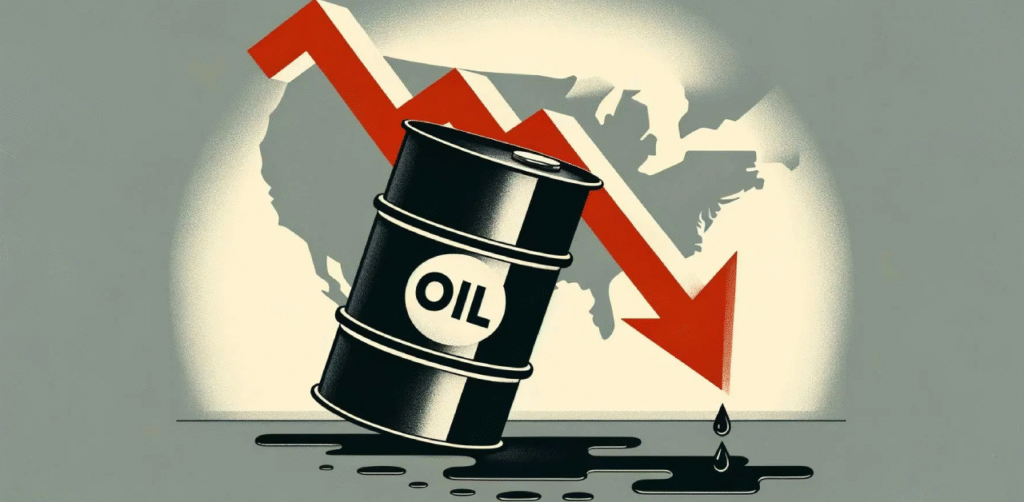
West Texas Intermediate (WTI) crude oil prices slipped below the $65.50 mark during Wednesday’s early Asian session, trading near $65.40. The downturn comes amid renewed concerns over global oil demand, driven by escalating trade tensions, and expectations of increasing global supply—particularly from Iraq. The market now turns its focus to the upcoming U.S. Energy Information Administration (EIA) report for further cues.
Trump’s Tariff Threats Revive Demand Fears
The primary catalyst behind WTI’s decline is heightened market anxiety over U.S. trade policy. President Donald Trump announced that reciprocal tariffs will rise on August 1 for countries that have not secured trade agreements with the United States. This follows his recent threat to impose a 30% tariff on European Union imports if ongoing negotiations fail to yield results.
These developments have amplified fears of a slowdown in global economic activity. A prolonged trade war could weigh heavily on industrial output, global supply chains, and international trade volumes—all of which are key drivers of oil consumption. As traders assess the risk of softer demand in the coming months, oil prices remain under pressure.
Iraqi Oil Exports Resume After Two-Year Hiatus
Adding to the bearish sentiment, Iraq has officially resumed crude oil exports from the Kurdistan Region. This move ends a two-year suspension and is seen as a step toward easing internal political tensions between the federal government in Baghdad and regional authorities in Erbil.
Iraqi officials have confirmed that Kurdistan will contribute around 230,000 barrels per day (bpd) to Iraq’s overall crude output, significantly increasing the country’s export capacity. The anticipated rise in Iraqi supply comes at a time when global markets are already grappling with fears of oversupply, which could further weigh on WTI prices in the near term.
Inventory Data Offers a Glimmer of Hope
Despite the growing concerns over demand and supply, there was some supportive data from the American Petroleum Institute (API). According to its latest report, U.S. crude inventories declined by 577,000 barrels in the week ending July 18. This compares to the previous week’s massive build of 19.1 million barrels.
However, even with this drawdown, U.S. stockpiles remain elevated—up by over 11 million barrels so far this year, based on API data. While the drop helped limit losses, it wasn’t enough to shift the overall bearish sentiment. Market participants now await the official weekly crude inventory report from the EIA, due later Wednesday, for a more comprehensive outlook.
Market Outlook: Bearish Bias Remains
WTI’s short-term trajectory appears tilted to the downside, with the combination of political uncertainty, softening demand projections, and rising supply forming a bearish trifecta. Unless the EIA data surprises to the upside with a significant drawdown or there’s a notable de-escalation in trade tensions, oil prices may struggle to regain strong upward momentum.
That said, traders will remain sensitive to geopolitical developments, especially those related to Middle Eastern production, U.S. foreign policy, and global economic indicators. Any significant shift in sentiment could trigger sharp volatility in crude markets.














